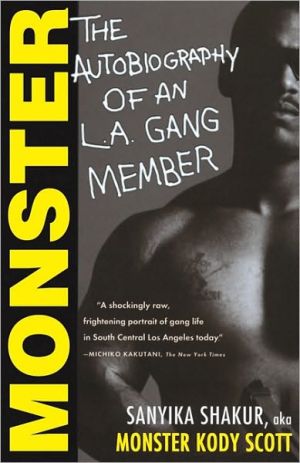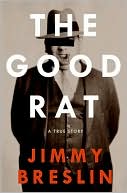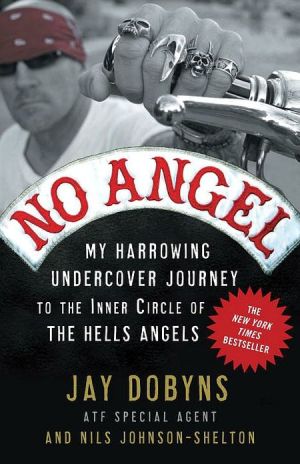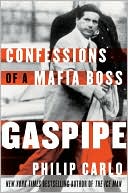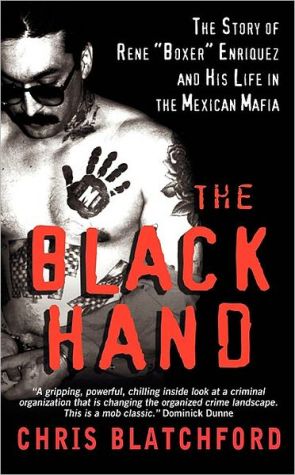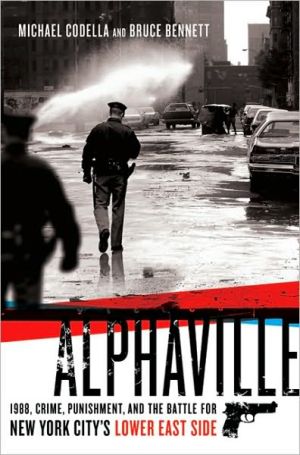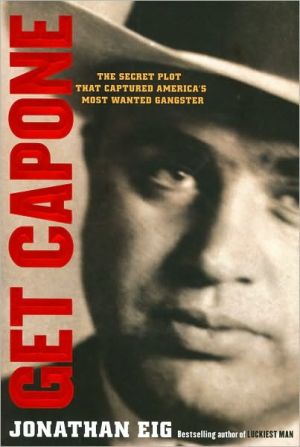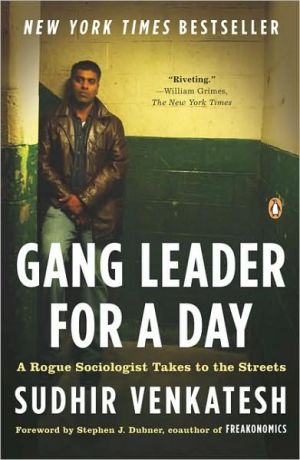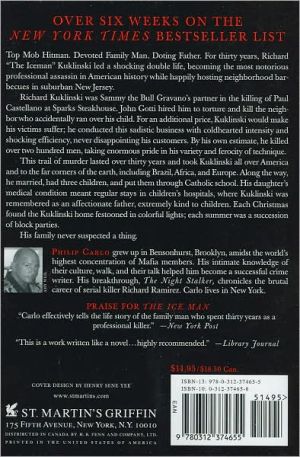Monster: The Autobiography of an L.A. Gang Member
After pumping eight blasts from a sawed-off shotgun at a group of rival gang members, twelve-year-old Kody Scott was initiated into the L.A. gang the Crips. He quickly matured into one of the most formidable Crip combat soldiers, earning the name "Monster” for committing acts of brutality and violence that repulsed even his fellow gang members. When the inevitable jail term confined him to a maximum-security cell, a complete political and personal transformation followed: from Monster to...
Search in google:
After pumping eight blasts from a sawed-off shotgun at a group of rival gang members, twelve-year-old Kody Scott was initiated into the L.A. gang the Crips. He quickly matured into one of the most formidable Crip combat soldiers, earning the name “Monster” for committing acts of brutality and violence that repulsed even his fellow gang members. When the inevitable jail term confined him to a maximum-security cell, a complete political and personal transformation followed: from Monster to Sanyika Shakur, black nationalist, member of the New Afrikan Independence Movement, and crusader against the causes of gangsterism. In a document that has been compared to The Autobiography of Malcolm X and Eldridge Cleaver’s Soul on Ice, Shakur makes palpable the despair and decay of America’s inner cities and gives eloquent voice to one aspect of the black ghetto experience today. Library Journal ``Monster'' Kody, today known as Sanyika Sakur, spent 16 years as a ``gangbanger'' in South Central Los Angeles. His account begins at age 11, when he was inducted into the ranks of the Crips, and ends (hundreds of bodies later) with Scott serving a seven-year prison term for beating a crack dealer. Throughout, he successfully conveys a sense of the siege mentality that prevails every minute of every day, due to the daily barrage of gang-on-gang violence. Names of derivative Crip gangs (e.g., Rollin' Sixties, Hoovers, Grape Street Watts Crips) and gang members (e.g., Li'l Hunchy, Tray Ball, Huckabuck) flit across the pages in a confusing manner, but Scott pushes the narrative forward with scarcely a glance backward, and, ultimately, names and incidents are not important. Unfortunately, Scott was in prison during the violence that followed last year's Rodney King incident and thus sheds little light on the peace treaty forged between the Bloods and Crips. Although unrepentant, Scott today is dedicated to ending gang violence. Recommended for most collections.-- Mark Annichiarico, ``Library Journal''
\ Library Journal``Monster'' Kody, today known as Sanyika Sakur, spent 16 years as a ``gangbanger'' in South Central Los Angeles. His account begins at age 11, when he was inducted into the ranks of the Crips, and ends hundreds of bodies later with Scott serving a seven-year prison term for beating a crack dealer. Throughout, he successfully conveys a sense of the siege mentality that prevails every minute of every day, due to the daily barrage of gang-on-gang violence. Names of derivative Crip gangs e.g., Rollin' Sixties, Hoovers, Grape Street Watts Crips and gang members e.g., Li'l Hunchy, Tray Ball, Huckabuck flit across the pages in a confusing manner, but Scott pushes the narrative forward with scarcely a glance backward, and, ultimately, names and incidents are not important. Unfortunately, Scott was in prison during the violence that followed last year's Rodney King incident and thus sheds little light on the peace treaty forged between the Bloods and Crips. Although unrepentant, Scott today is dedicated to ending gang violence. Recommended for most collections.-- Mark Annichiarico, ``Library Journal''\ \ \ \ \ Kirkus ReviewsL‚on Bing's study of L.A. gangs, Do or Die (1991) featured on its cover an awesomely muscular African-American male, naked to the waist, wearing sunglasses and wielding an automatic weapon. That man was "Monster" Kody Scott, who here tells his electrifying life story: an angry, stunningly violent odyssey through gang warfare and prison to redemption. The acknowledgements page reveals Scott's continued wrath: "Bullet-proof love is extended to Muhammad Abdullah and the Islamic Liberation Army...Teflon bullets are sent to the sell- outs." Scott is still fighting, only now for the New Afrikan Independence Movement, dedicated to creating a separate black nation. But, then, the author has always been at war: Drafted at age 11 into a "set" of the "ghastly gang army" of the L.A. Crips—an army of "children gone wild in a concrete jungle"—he shot his first man, a rival Blood, that same year, and for the next 15 years led a life spent defending his set by word, fist, and bullet: "I liked to see the buckshot eat away their clothing, almost like piranha fish." Much of Scott's memoir is a horrifying chronicle of gang combat—shootings, betrayals, retaliations (Scott was shot six times in one ambush)—almost tedious in its unrelenting machismo and bloodshed, made palatable mostly by the author's deep knowledge of gang lore. Eventually, jail stints punctuate the street fighting; finally, in 1983, Scott, behind bars, meets a radical Muslim who teaches him that the real battle is with the white oppressors—a lesson that takes hold in the late 80's in Folsom Prison, where, amid outrageous depravity, Scott renounces "gangsterism" to embrace his new struggle. Today,Scott, 29, is back in prison, serving seven years for "a healthy beating" he gave to an unrepentant crack dealer. A savage document of the street that gives, and asks, no quarter. Anyone who wants to know why L.A. burned will find the chilling answer here. (First printing of 65,000; first serial rights to Esquire)\ \
